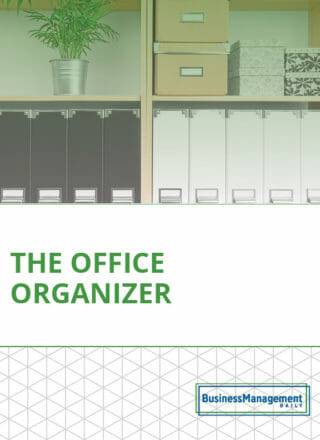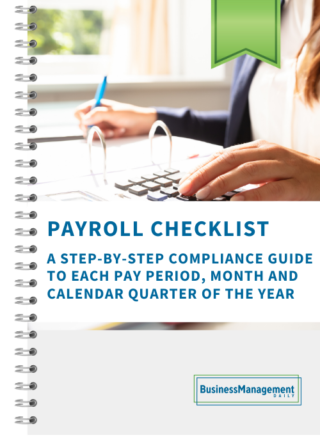How to build high performance culture
The power of a High-Performance Culture
Most business goals tend to look the same.
By that, I mean that most organizations want to improve employee performance to boost profitability and ensure total customer satisfaction.
Yet, they often neglect one of the most effective ways to achieve these goals: implementing a high-performance culture.
Instead, they focus too much on hiring top talent and pressuring management to improve their business performance.
However, a positive workplace culture is an extremely important aspect of building high-performing teams.
If your corporate culture is toxic or too demanding, your retention rates will drop as more employees pursue other opportunities. You’ll also face other negative factors like high levels of burnout and low employee morale.
According to research, organizations with strong company cultures generate 4x more revenue than organizations with average work cultures.
Culture change should be one of your top priorities in becoming a high-performance organization that consistently breaks growth records. Team members aspire to continuous improvement in a high-performance culture, always seeking to sharpen their skills or make a process more efficient.
Yet, empowering your employees is a must to achieve this powerful status.
You must also implement a desirable rewards system to motivate your employees to go above and beyond.
In this guide, I’ll teach you how to foster a high-performance culture for your business, so stay tuned to learn more.
The importance of a high-performance workplace
Why is it important to focus on your organization’s culture?
For one, McKinsey & Company research found that organizations emphasizing performance and health deliver the best financial results.
In other words, a. strong organizational culture means better performance metrics across the board.
Your employees will feel a sense of purpose and well-being from their work, and you’ll see nothing but positive impacts on your bottom line.
However, an actual high-performing workplace invests heavily in its employees so that they can reach their full potential.
This means employing a growth mindset for all team members, not just the organization. Instead, you should invest in the professional development of all your staff. This will foster an environment of continuous learning where all employees are constantly learning new things and refining their skills.
As a result, your lower-level employees will always possess the skills necessary to fill higher-level positions as they open up, which is desperately needed today.
Currently, the global workforce faces a sizable skills gap.
More research by McKinsey & Company from 2021 revealed that 87% of companies either have skills gaps or will face one soon.
A significant reason is that older, more experienced workers are retiring, and there aren’t enough skilled workers to replace them.
Implementing a culture of continuous learning is a great way to combat this issue, as it will prepare your younger employees for taking on more skilled positions.
Also, investing in your people stretches beyond teaching them new skills and investing in their development. You’ll also need to focus on their mental health and well-being to ensure peak performance.
According to the National Institutes of Health (NIH), sound employee mental health leads to increased performance, so ensuring your team has a positive work environment is worthwhile.
What are the benefits of a high-performance culture?
High-performance organizations possess the following advantages:
- Improved performance and profitability. As mentioned, higher-performing businesses see better financial results, especially when emphasizing employee experience and health. If your leadership team has difficulty meeting your performance initiatives, focusing on employee development and continuous improvement may be the secret weapon you need.
- Stronger creativity, decision-making, and problem-solving. One of the best things about having empowered, highly engaged employees is that they are more creative, make better decisions, and solve more problems. On the creative front, research by NIH found that “employee engagement promotes employee voice, which in turn leads to innovative workplace behavior.”
In other words, providing an engaging work environment will help employees feel comfortable expressing their unique voices, allowing their creativity to shine through. The same is true for decision-making and problem-solving: the more engaged employees are, the better they’ll function around the office.
- Better employee retention. Top talent isn’t just after competitive salaries (although undeniably important); they also want to align with their company’s values. Most people need a sense of purpose to do their best work and be happy. According to McKinsey & Company, 70% of people derive their purpose from work.
Therefore, your employees will want to stay with you long-term if you have strong core values and a high-performance culture. Also, investing in employee development is a core tenet of a high-performance culture and helps attract top talent.
- Building positive role models. Another benefit of a high-performance culture is that it forges experienced, highly skilled workers who make perfect role models for the next generation of employees. Establishing a mentoring program can extend this benefit further by having your seasoned workers train your new hires to ensure they possess the skills necessary to perform their roles adequately.
- Increased customer satisfaction. Increased performance, better decision-making, and better employee retention lead to more satisfied customers. After all, your team will be firing on all cylinders, and they’ll be happy to do their job. As a result, your customers will get taken care of by employees who have reached their full potential.
Key characteristics of a high-performance culture
Next, let’s examine what makes a high-performing organization tick. Then, you can adapt these elements to your organization’s existing practices.
Clear goals and expectations
First, strong goal setting is a must for high-performing organizations. This means you must be able to develop and set detailed, actionable goals with milestones strewn along the path to victory.
A good way to improve your goal setting is to use the SMART methodology, which stands for:
- Specific. Setting vague goals will not benefit your organization. An example would be “to earn more money this year.” This is a poor goal because it is not specific enough. Instead of stating that you want to increase your revenue, add more details to make it more specific, like “to increase our profits while not exceeding our budget or borrowing more money.”
- Measurable. After that, make the goal measurable by adding a statistic into the mix. For instance, you could say, “to increase our profits by 60% while not exceeding our budget or borrowing more money.” Now, you’ve got a way to measure your progress toward your ultimate goal.
- Achievable. You should also ensure that your goal is realistic enough to achieve. Just as setting vague goals isn’t a needle-mover for growth, neither is setting unrealistic goals. A good way to remain within the realm of possibility is to examine your past successes and challenges. This will help you understand which goals are achievable and which are unrealistic. For the sake of our fictional goal, let’s say that the team realizes that 60% is a bit steep, so they alter it to 40% instead.
- Relevant. Ask yourself, “Is this goal going to help us achieve our primary business objectives, or is it something that can wait until next year?” Each goal you set should be directly relevant to your larger, more long-term goals.
If achieving a goal doesn’t place you closer to your primary business objectives, consider scrapping it in favor of one that will. For our fictional example, the company has long been eager to increase its profitability, so the goal is relevant.
- Time-bound. Lastly, you must give yourself a deadline for every goal you set, even without a clear timeline. This is because goals with no timeline rarely get achieved. Putting off a non-time-sensitive project indefinitely is far too easy, so time-bound goals are necessary.
Once a goal has a deadline, putting it off is no longer a possibility so that the work will get done. For our goal, we’ll implement a 12-month deadline, making our goal “to increase our profits by 60% in 12 months while not exceeding our budget or borrowing more money.”
Now, we have a detailed, achievable goal that our team can work on immediately.
Accountability, adaptability, and ownership
Empowering employees is about encouraging them to take ownership of their roles, but there’s a caveat.
Unchecked autonomy isn’t a recipe for success, so you must hold your employees accountable for their actions. This will give your organization some buffer room for empowered employees and upper management.
While you openly encourage your team to experiment and try new things, they will have deadlines to meet and deliverables to produce.
You should also encourage your team to feel a sense of ownership over their work. Let them know that the success of their projects directly affects the organization, which will help them form a sense of purpose and pride in their work.
However, as a manager, you should also take a direct interest in each employee’s goals. This will help them feel like a valued part of the organization, not just someone there to help you earn a profit.
Instead, focusing on employee development will create a mutual growth relationship in which the organization and its employees reach new heights.
Continuous improvement
Continuous improvement is one of the most important tenets of a high-performance culture. Remaining stagnant is a recipe for being overshadowed and outperformed by your competitors.
However, encouraging continuous improvement in your organization must take many forms.
Ideally, your team should strive to improve:
- Internal processes to boost efficiency
- Their soft and hard skills
- Your company culture
- Their mental well-being
- Their professional development
Implementing continued education programs at your organization is also a good idea. This will give your employees the chance to learn new skills and expand on existing ones so that they can pursue new opportunities.
Continued education programs will also help narrow your organization’s skills gap since new hires can refine their skills as soon as they begin working for you.
Effective communication and feedback
Your internal processes must run like a well-oiled machine to become a high-performance organization. Poor communication makes this impossible. Instead, exceptional communication will help you achieve higher levels of employee performance.
First, you must ensure strong communication between team members and interdepartmental communication.
Decide on official communication channels for each team to keep things simple. For instance, your sales team should use Slack to stay in touch while on the go, while Outlook works best for teams tied to desks.
Agreeing on one (or a few) communication channels will reduce miscommunications, such as someone not seeing an important email or text message.
After that, you should improve the communication between management and employees. The best way to do this is to have your managers engage in one-on-one check-ins with team members every week or bi-weekly. This will allow them to express any concerns behind closed doors to ensure a sense of psychological safety.
Recognition and rewards
You can’t expect your team to perform to high standards if they have no incentives to do so.
That’s why you need a strong recognition and rewards system to give your people a reason to work hard.
Financial incentives, special perks (like designated parking and access to amenities), and thoughtful gifts (restaurant meals, gift cards, luxury items, etc.) are all great rewards that will encourage your team to work harder.
You should always celebrate your team’s successes, no matter how small. Remember to mention your employees’ achievements and your team’s wins.
Concluding thoughts: High-performance culture
Here’s a recap of what we’ve covered so far:
- High-performing company cultures boast increased productivity and better profitability.
- Investing in employee development will improve your retention rates.
- Set clear goals and expectations to ensure high-performance levels.
- Focusing on continuous improvement will help you achieve your goals and close skills gaps.
- Effective communication and feedback loops are necessary to become a high-performing organization.



